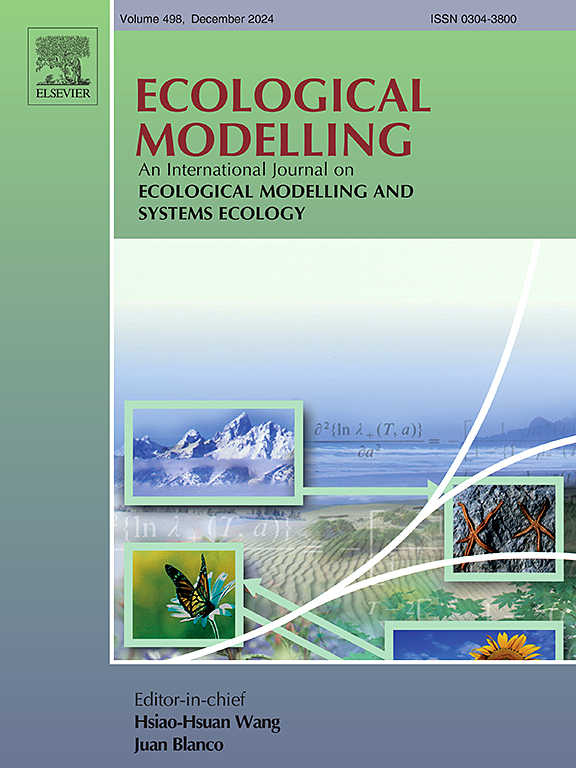根接树如何形成网络用 pyNET 模拟网络动态
IF 2.6
3区 环境科学与生态学
Q2 ECOLOGY
引用次数: 0
摘要
自然根系嫁接是木本植物中的一种普遍现象。以往的研究主要关注个体生长和资源交换减少的影响,但我们对嫁接树木群体的集体行为及其形成的网络缺乏了解。在这里,我们介绍了 pyNET,这是一个基于机械代理的模型,旨在探索根系嫁接网络的出现。我们在不同的场景下进行了模拟实验,这些场景涉及缺水和不同的成本效益动态。成本表示形成根系嫁接所需的资源,而收益则表示在树木之间重新分配的水分。我们的模型成功地复制了观察到的结构变量与网络特征之间的关联模式。具体来说,我们能够再现观察到的特征,如嫁接频率和平均群体大小。特别是,我们发现网络结构自然会受到根系大小的强烈影响,但分配给嫁接的时间和资源也是关键因素。pyNET 是探索不同环境条件下根系嫁接网络的形成以及了解其对资源竞争的影响的重要工具。我们的研究支持了这一主题的理论发展,希望能促进进一步的实证研究。本文章由计算机程序翻译,如有差异,请以英文原文为准。
How root-grafted trees form networks: Modeling network dynamics with pyNET
Natural root grafting is a widespread phenomenon in woody plants. While previous studies have focused on the effects of reduced growth and resource exchange at the individual level, we lack an understanding of the collective behavior of groups of grafted trees and the networks they form. Here, we present pyNET, a mechanistic agent-based model designed to explore the emergence of root graft networks. We performed simulation experiments with different scenarios involving water scarcity and different cost-benefit dynamics. Costs denote the resources required to form root grafts, while benefits denote the water redistributed among trees. Our model successfully replicates observed patterns linking structural variables to network characteristics. Specifically, we were able to reproduce observed characteristics such as grafting frequency and mean group size. In particular, we find that while the network structure is naturally strongly influenced by the size of the root system, the time and resources allocated to grafting are also critical factors. pyNET serves as a valuable tool for exploring the formation of root grafting networks under diverse environmental conditions and understanding their impact on resource competition. Our study supports theory development on the subject and hopefully stimulates further empirical studies.
求助全文
通过发布文献求助,成功后即可免费获取论文全文。
去求助
来源期刊

Ecological Modelling
环境科学-生态学
CiteScore
5.60
自引率
6.50%
发文量
259
审稿时长
69 days
期刊介绍:
The journal is concerned with the use of mathematical models and systems analysis for the description of ecological processes and for the sustainable management of resources. Human activity and well-being are dependent on and integrated with the functioning of ecosystems and the services they provide. We aim to understand these basic ecosystem functions using mathematical and conceptual modelling, systems analysis, thermodynamics, computer simulations, and ecological theory. This leads to a preference for process-based models embedded in theory with explicit causative agents as opposed to strictly statistical or correlative descriptions. These modelling methods can be applied to a wide spectrum of issues ranging from basic ecology to human ecology to socio-ecological systems. The journal welcomes research articles, short communications, review articles, letters to the editor, book reviews, and other communications. The journal also supports the activities of the [International Society of Ecological Modelling (ISEM)](http://www.isemna.org/).
 求助内容:
求助内容: 应助结果提醒方式:
应助结果提醒方式:


